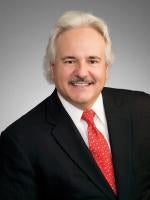On January 20, 2015, the Supreme Court altered the standard for review for claim construction decisions by a district court that the Federal Circuit applied for nearly two decades. The Federal Circuit reviewed claim construction by district courts de novo, according no deference to the district court’s construction. Claim construction is typically a critical, and often dispositive, step in patent litigation and the Federal Circuit’s standard of full de novo review resulted in a significant reversal rate.
In a 7-2 decision authored by Justice Breyer (Justices Thomas and Alito dissented), the Court differentiated between the standard of review for findings based on intrinsic evidence (e.g., the patent itself and its file history) and the standard for findings based on extrinsic evidence (e.g., expert testimony, treatises, articles, etc.), also referred to as subsidiary facts. It held that “subsidiary factfinding must be reviewed for clear error on appeal.” Teva Pharmaceuticals USA, Inc., et al., v. Sandoz, Inc. et al., Slip Opinion at pg. 12. (Emphasis added). In expressing this holding, the Court rejected the Federal Circuit’s long standing practice of de novo review for all aspects of a district court’s claim construction. The Supreme Court’s decision now requires that for intrinsic evidence “the judge’s determination will amount solely to a determination of law, and the Court of Appeals will review that construction de novo,” but for determinations based on extrinsic evidence, the Federal Circuit must apply the deferential clearly erroneous standard of review. (Id.)
The Court’s decision stems from a district court case involving a patent infringement suit brought by Teva Pharmaceuticals USA, Inc. (“Teva”) against defendant Sandoz, Inc. and various other companies (“Sandoz”). The defendants alleged that a claim term was ambiguous and, therefore, rendered the claims indefinite. The district court construed the claims largely based on Teva’s expert’s interpretation of the claims, rejected Sandoz’s expert’s views on claim interpretation, and found the claims to be definite. On appeal, the Federal Circuit reviewed the claim construction de novo, rejected the district court’s construction, and held that the claims were indefinite. On review by the Supreme Court, the Court held that there are no exceptions to Federal Rule of Civil Procedure 52(a)(6), which states that a court of appeals must not set aside a district court’s finding of facts unless they are clearly erroneous, and that even if exceptions were permissible, there is no convincing ground upon which to grant an exception for claim construction. (Id. p. 4). Additionally, “[a] district court judge who has presided over, and listened to, the entirety of a proceeding has a comparatively greater opportunity to gain that familiarity that an appeals court judge who must read a written transcript or perhaps just those portions to which the partied have referred.” (Id. p. 8).
In dissent, Justice Thomas argued that “because Rule 52(a)(6) provides for clear error review only of findings of fact and not to conclusions of law, “the question is whether claim construction involves findings of fact.” (Id. p. 1 of the dissent). Justice Thomas argued that since, in his view, patents “are governmental dispositions and provide rules that bind the public at large, patent claims resemble statutes” (Id. p. 7 of the dissent), the construction of which is generally a question of law, rather than contracts or deeds, which may have underlying factual issues that need to be resolved by the court prior to construction. Yet, as the majority countered, the Supreme Court had previously recognized in Markman v. Westview Instruments that claim construction had ‘“evidentiary underpinnings’ and that courts construing patent claims must sometimes make ‘credibility judgments’ about witnesses.” (Id. at p. 10 of the majority opinion, quoting Markman v. Westview Instruments, 517 U. S. 370 (1996)).
Since the Supreme Court requires the Federal Circuit to apply a bifurcated standard of review to claim construction, the full import of Teva Pharmaceuticals USA, Inc., et al., v. Sandoz, Inc. et al. will only become known over time, as the Federal Circuit applies the new standard in cases before it. In many cases, claim construction rulings will be based on the intrinsic record and still subject to de novo review. Moreover, as it is well established that extrinsic evidence is properly considered only to resolve any ambiguities that are presented in the intrinsic record, even when extrinsic evidence is considered by the district court, the Federal Circuit in reviewing the intrinsic evidence de novo may find no ambiguity, thereby rendering the lower court’s findings on the extrinsic evidence moot.
Nonetheless, the Supreme Court made clear that when the district court looks “beyond the patent’s intrinsic evidence and to consult extrinsic evidence in order to understand, for example, the background science or the meaning of a term in the relevant art during the relevant time period” in order to resolve a dispute, that “subsidiary factfinding must be reviewed for clear error on appeal.” (Id. at 12). As such, litigants may find it beneficial to adjust their strategy during claim construction proceedings and either introduce, or intentionally limit, the use of extrinsic evidence before the district court in an effort to dictate the level of review (and certainty) they will receive before the Federal Circuit.






 />i
/>i


